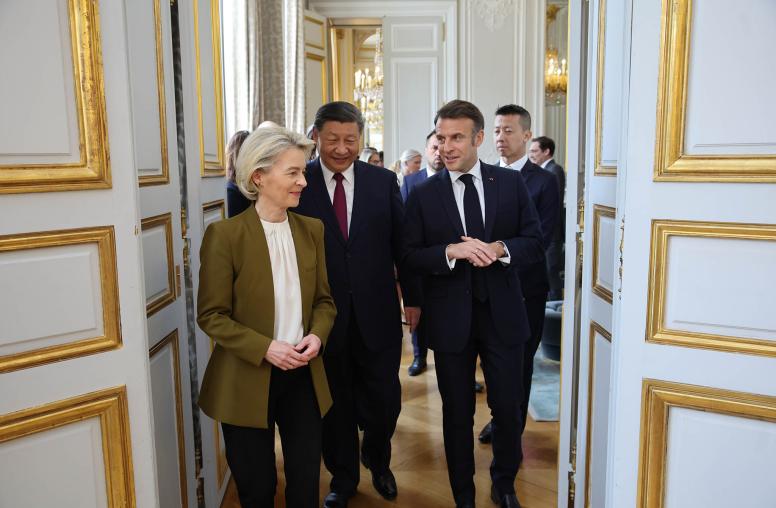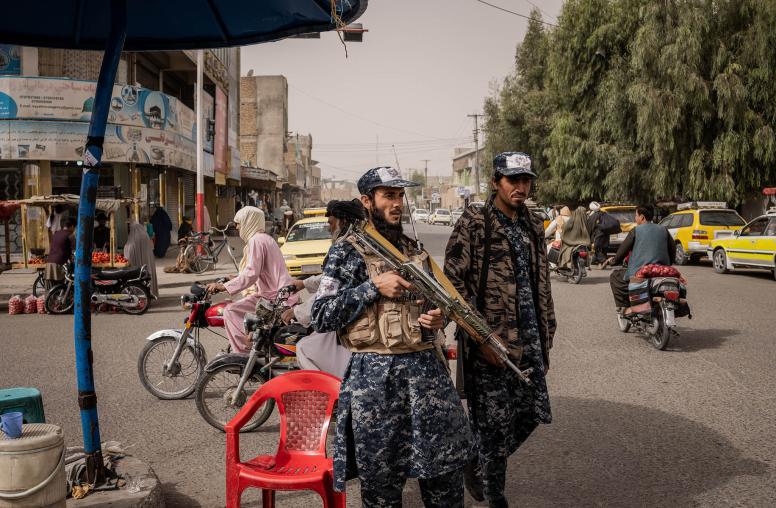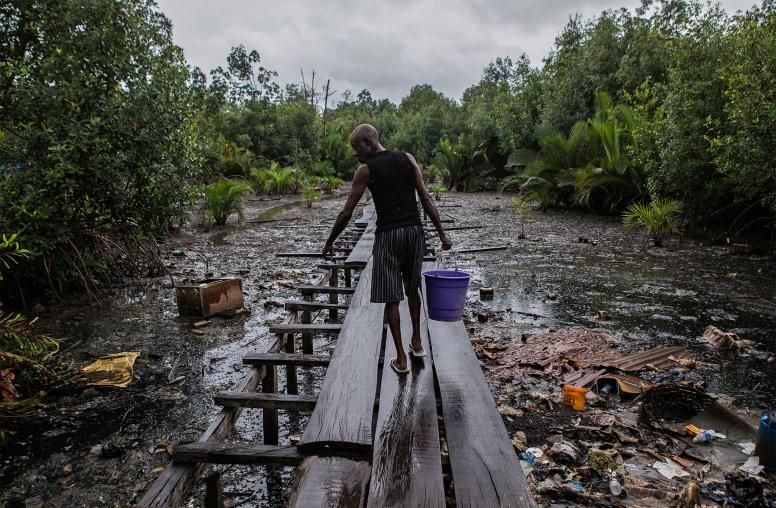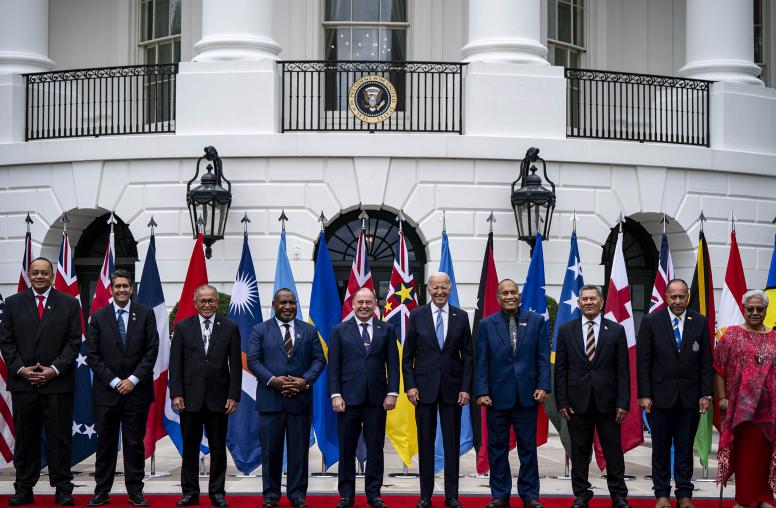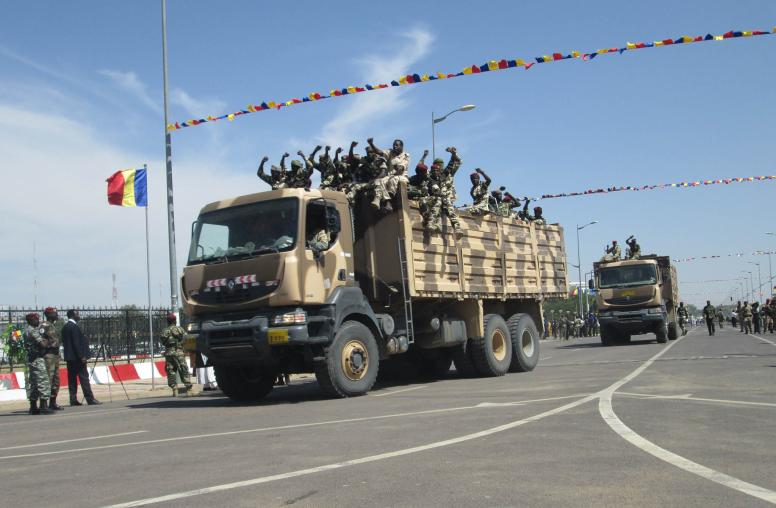Conducting Dialogues for Peace: A Symposium on Best Practices
 What techniques have been useful to experienced facilitators in conducting dialogue for peace? On November 12, 2002, the United States Institute of Peace held a special symposium designed to bring together practitioners and scholars both virtually and in person to explore several case studies and look at techniques that have been useful in promoting problem-solving in zones of conflict around the globe.
What techniques have been useful to experienced facilitators in conducting dialogue for peace? On November 12, 2002, the United States Institute of Peace held a special symposium designed to bring together practitioners and scholars both virtually and in person to explore several case studies and look at techniques that have been useful in promoting problem-solving in zones of conflict around the globe.
Part of the Institute's ongoing efforts to identify best practices for practitioners in the fields of conflict prevention, management, and resolution, this symposium focused on the craft of promoting dialogues between groups involved in conflict.
This event was webcast-live on November 12th. Additionally, Internet participants in the symposium were able to interact with the presenters and participate in the discussion with other participants by sending in questions by e-mail.
Summary
Bringing together practitioners and scholars to share insights into the craft of facilitation, the Institute's symposium "Conducting Dialogues for Peace" surveyed a rich array of successful techniques. Through comparative analysis of case studies from around the world, participants in the symposium identified a set of skills and tools that constitute effective practices for facilitating dialogue between groups involved in conflict.
One of the most crucial initial steps in promoting dialogue involves selecting an effective team of facilitators, partners, and support staff. Team members must play diverse and challenging roles that require a wide range of skills. For instance, it is important for team leaders to have subject matter expertise relating to the conflict in addition to solid facilitation skills. This expertise helps facilitators pose informed and substantive questions that can reframe discussions and move problem solving forward. Linguistic facility can also be a useful attribute when assembling a team. Since frank and revealing discussions among participants often take place informally, outside the parameters of structured meetings, a team member fluent in the local language can often gain valuable insights by taking part in these informal discussions. Working with partners who have built productive relationships with local communities is another key to success. Such local ties can help establish the legitimacy and credibility of the facilitation effort, as David Steele noted in his discussion of interfaith dialogue in Bosnia-Herzegovina. A final element in an effective facilitation team is continuity. Several presenters noted that dialogues build most effectively on past accomplishments when they can draw upon the experience of facilitators who have been part of the process for some time.
The practitioners involved in the symposium concurred that effective facilitation teams should include a mix of personalities with a diversity of approaches to dealing with conflict. Yet while styles of conflict management vary among expert facilitators, most share a set of common traits. Among the most important of these attributes are stamina, integrity, tolerance for ambiguity, poise under pressure, and the ability to demonstrate empathy and respect for dialogue participants whose lives have been shaped by conflict. Additionally, effective facilitators must avoid the impression of bias in their relations with parties to the conflict. As Howard Wolpe stressed, this does not require facilitators to operate without values. Instead, it means that facilitators must be perceived as honest brokers.
Successful dialogue promotion necessitates not only assembling an expert team of facilitators, but also careful selection of participants and locations for meetings. Presenters at the symposium concurred that it is essential to choose a meeting venue which is physically secure, that is seen as neutral ground, and that meets the comfort and technical needs of those engaged in dialogue. Removing participants from the distractions and demands of their daily lives, so that they may focus on rebuilding relationships and resolving conflicts, is also desirable (though not always possible).
When it comes to choosing participants, there is clearly great variety from case to case. The practitioners at the symposium have worked effectively with participants who operate at every level from grassroots activism to national policymaking. Yet critical to success at all of these levels is the inclusion of stakeholders whose cooperation is needed for the concrete implementation of any agreements reached. In addition, several presenters mentioned their efforts to augment the inclusiveness of the dialogue by seeking greater women's representation in the process. Inclusiveness, of course, is not an end in itself; it is a strategy to achieved desired results such as accountability. For example, George Ward and Daniel Serwer emphasized that dialogues that include civil society and media representatives as well as political leaders are helpful in holding politicians to the promises they make.
One crucial set of shared insights that emerged from the symposium dealt with issues of managing the dialogue process. Several presenters emphasized the importance of sustained commitment to an ongoing series of meetings and working sessions. For instance, Hal Saunders and Randa Slim pointed out that building trust and transforming previously hostile relationships into collaborative ones takes a great deal of time. Attempts to rush the process will lead to fragile agreements lacking buy-in from parties to the conflict. Similarly, attempts to impose agreements upon participants violate the essentially non-coercive and voluntary nature of facilitated dialogue, and are unlikely to succeed. As Andrew Williams stressed, facilitators who attempt to dictate agendas and stipulate goals end up disabling the dialogue.
Along with the need for sustained commitment comes the imperative of flexibility. Participants in an ongoing peace dialogue often redefine their objectives as the process evolves, and facilitators must adapt their strategies to meet the specific challenges and opportunities of each phase in the dialogue. For instance, many experienced facilitators have found that participants must move through a cathartic phase of telling their stories before focusing on either reconciliation or on analytical tasks such as problem solving. Story telling, deftly and respectfully moderated, becomes the first step in a process of confronting fears, realizing shared concerns among former antagonists, acknowledging wrongdoing, forgiving, and collaboratively seeking justice.
If handled effectively, conflict analysis can also be a pivotal phase in the dialogue process. Guided by an expert practitioner, participants often realize that the forces shaping their conflict (forces that they believed were uniquely intractable) are actually common to other conflicts, and may be amenable to similar responses. This realization can help participants step back from their conflict situation, see it more clearly, and gain a greater sense of hope for its resolution.
Problem solving is often another crucial phase in the dialogue process. It can help participants transcend narrowly defined viewpoints to analyze needs and interests from each other's perspectives. This expansion of perspective often paves the way for a more imaginative interchange that generates productive new options for resolving conflict. As George Ward and Daniel Serwer pointed out, problem-solving exercises are most likely to succeed when the facilitator maintains a focus on future goals rather than on historical grievances.
A final procedural consensus that emerged from the symposium was the need for robust follow-through and institutionalization of agreements reached through dialogue. Some presenters, such as Hal Saunders and Randa Slim, have pursued this step by promoting the establishment of non-governmental organizations whose purpose was to sustain, expand, and implement the results of the dialogue. Others, like David Steele, have trained local staff to maintain the connections among participants during intervals when meetings and workshops are not taking place. Another technique, employed by George Ward and Daniel Serwer, is to embed follow-up mechanisms into declarations of intent. Of course, facilitators must then monitor implementation of such agreements.
Best practices involve not only promoting dialogue but also cataloging and assessing its results. In his presentation, Ron Fisher articulated a widespread sense of the need for practitioners to document and disseminate their work. This will generate the raw material for a more informed discussion, in both the academic and practitioner communities, of how to contribute most fruitfully to dialogues for peace. Enhanced documentation and dissemination, emphasized Christopher Mitchell, is also needed to improve coordination. As the conflict resolution field expands, it is important for practitioners to complement and build upon each other's work.
Schedule of Events
9:00 AM - Welcoming Remarks
• Harriet Hentges, Executive Vice President,
9:10 AM - Project Objectives and Introduction
• George Ward, Director, Training Program, U.S. Institute of Peace
• Daniel Serwer, Director, Balkans Initiative, U.S. Institute of Peace
9:15 AM - Moderating Sustained Dialogue in Tajikistan
• Harold H. Saunders, Director of International Affairs at the Kettering Foundation and President of the International Institute for Sustained Dialogue
• Randa M. Slim, director, SLIM & Associates
10:45 AM - Interfaith Dialogue as a Means to Healing and Empowerment Among Religious Communities in Bosnia-Herzegovina
• David Steele, Director of the Religion and Conflict Resolution Program, Center for Strategic and International Studies
Noon - An Overview of Interactive Facilitation Methods: Dialogue, Conflict Analysis, and Problem-Solving
• Ronald J. Fisher, Professor, International Peace and Conflict Resolution Program, School of International Service, American University
1:00 PM - The Centre for Conflict Analysis and Facilitation Workshops in the Moldovan Conflict, 1993 - 2002: Some Thoughts and Conclusions
• Andrew Williams, Director, Centre for Conflict and Peace, University of Kent, U.K.
2:30 PM - Burundi: Lessons Learned from a Regionally Sponsored Peace Process
• Howard Wolpe, Public Policy Scholar and Consulting Director to the Africa Project, Woodrow Wilson Center for International Studies, and former Special Envoy to the Great Lakes Region
4:00 PM - Promoting Interethnic Co-existence in Kosovo
• George Ward, Director, Training Program, U.S. Institute of Peace
• Daniel Serwer, Director, Balkans Initiative, U.S. Institute of Peace
5:00 PM - Closing Remarks
• Christopher Mitchell, Cumbie Professor of International Conflict Analysis , Institute for Conflict Analysis and Resolution, George Mason University
